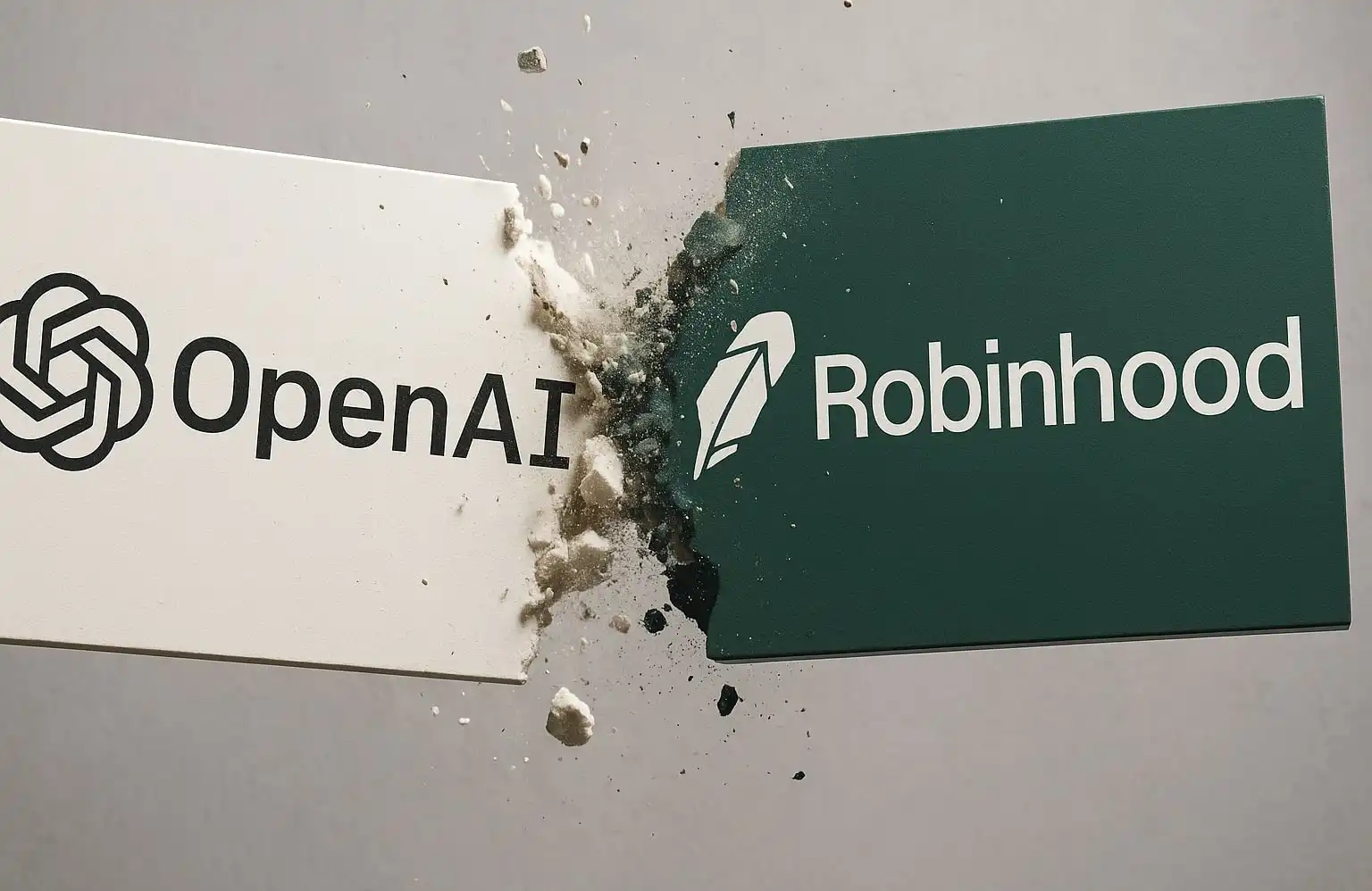Coinbase, which relies on US Treasury bonds for survival, is still struggling to stay afloat.
Under the shadow of the cold winter in the encryption industry, the days of exchanges are not easy. With a significant decrease in trading volume, revenue continues to sharply decline.
Publicly listed companies like Coinbase have a responsibility to answer to their shareholders.
The recently released Coinbase Q2 financial report shows that the trading volume in the second quarter of 2023 decreased by 37% compared to the previous quarter, and the trading revenue also declined. For the first time, subscription and service revenue exceeded it. This means that the revenue structure of cryptocurrency exchanges is undergoing a transformation, which may redefine the current cryptocurrency landscape.
Further analysis reveals that in the "Subscription and Service" category, the largest proportion of interest income comes from its holdings of USDC, with a revenue of $151 million, accounting for 75% of total revenue. Needham & Company analyst John Todaro believes that Coinbase's USDC interest income is largely benefited from the revenue sharing agreement previously reached with Circle and Center on the USDC stablecoin reserve, although the decline in USDC's market value has led to a decrease in Coinbase's interest income, the revenue generated by the Fed's interest rate hike can offset some of the losses.
Although Coinbase's Q2 revenue has declined, it exceeded expectations. In addition, the net loss has also narrowed and exceeded expectations. After the Q2 financial report was released, the stock briefly touched $97 in after-hours trading on August 6th, up from $90.75 (Thursday's closing price during trading hours), and has now fallen to $81. Since BlackRock submitted an application for a spot Bitcoin ETF to the US SEC in mid-June and Coinbase was identified as its custodian, Coinbase's stock price has soared more than 60%.
Q2 revenue performance and pressure have been temporarily relieved. However, with the continued crypto winter and tightening regulations, Coinbase will face greater challenges in the future. This forces it to actively adjust its business direction and explore new sources of revenue.
Trading is no longer the main source of income
Coinbase (COIN) released its Q2 financial report on Thursday, August 4th, which showed a decline in both trading volume and revenue compared to Q1. In Q2, Coinbase's total trading volume decreased from $145 billion in Q1 to $92 billion, and the decline in cryptocurrency trading volume contributed to the decrease in Coinbase's trading revenue, which fell from approximately $375 million to $327 million.
As the largest cryptocurrency exchange in the United States, Coinbase's business model heavily relies on transaction revenue. As early as April 2021, when Coinbase went public on NASDAQ, documents submitted to the US Securities and Exchange Commission (SEC) showed that in the first quarter of 2021, Coinbase earned a huge revenue of $1.5 billion from transactions, accounting for 86% of its total revenue of $1.8 billion at that time.
As the prices of digital assets continue to decline, Coinbase's trading revenue has also decreased. In the first quarter of this year, Coinbase's trading revenue dropped to $375 million, accounting for only 46% of its total revenue of $773 million.
The proportion of Coinbase's Q2 trading revenue has further decreased, and for the first time, it has been surpassed by the "subscription and service" revenue category. According to the Q2 financial report, Q2 "subscription and service" revenue was approximately $335 million, including USDC interest income, staking and custody fees, accounting for 51% of net revenue, surpassing trading fee revenue of 49%.
This marks a significant shift for Coinbase, where transaction fees may no longer be the primary source of revenue and may be replaced by another revenue source, "subscriptions and services."
The decline in trading volume has brought huge revenue pressure to Coinbase, which means that Coinbase needs to actively seek other sources of income, not just rely on the ups and downs and fluctuations of the cryptocurrency market, such as subscriptions and services, as well as staking services.
美债收益很显眼
translates to
US Treasury yields are very eye-catching
The financial report shows that in the revenue category of subscriptions and services, Coinbase received a total of $335 million in revenue in the second quarter, surpassing transaction revenue for the first time at $327 million. This number represents a 1.3x increase from the same period one year ago, when revenue was $147 million.
In the "Subscription and Services" revenue category of Coinbase Q2, the largest proportion is interest income, which is $201 million, while the income from blockchain rewards is only $87.6 million (although this income has still increased slightly compared to the previous quarter, from $74 million in Q1 to approximately $87.6 million in this quarter).

Although the proportion has increased, interest income is still declining compared to the previous quarter, dropping from $240.8 million in Q1 to $201.4 million in Q2, mainly due to the continuous decline in the market value of USDC, which is the main asset source of interest income. It is worth noting that in the second quarter, $151 million of interest income came from its holdings of USDC.

Needham & Company analyst John Todaro said that Coinbase's interest income is largely attributed to its relationship with Circle and the issuer and manager of USD Coin, Center. As a founding member of the alliance, Coinbase reached some kind of revenue sharing agreement with Circle on the USDC stablecoin reserve as early as 2018 when USDC was launched.
Stablecoins are tokens pegged to the price of sovereign currencies such as the US dollar. They are typically backed by cash and government-issued treasury bills, such as bonds. As the Federal Reserve attempts to combat high inflation through significant interest rate hikes, the yield on US government bonds will continue to rise.
As the continuous rise of government bond yields, Coinbase can earn a large amount of interest income from it. According to CoinGecko's data, the market value of USDC is 26.1 billion US dollars, ranking sixth in market value among cryptocurrencies. Nevertheless, the market value of USDC still fell by 19% from 32.5 billion US dollars at the beginning of the second quarter, mainly due to the collapse of Silicon Valley Bank in March, which caused USDC to plummet and become "unanchored".
Since then, the Federal Reserve has adjusted interest rates to the highest level in 22 years, theoretically increasing Coinbase's income on USDC reserves. However, considering the decline in USDC market value, this may offset some of the gains.
The Fed's interest rate hike is beneficial to Coinbase's business, which can offset most of the decline caused by the USDC market value drop. However, since the revenue-sharing agreement reached by Coinbase and Circle in USDC has not been made public, the exact revenue details cannot be known.
Redemption! Coinbase's New Direction Under Exploration
Although the trading volume of Coinbase in Q2 decreased significantly, the overall revenue performance exceeded market expectations. This is largely due to interest income and staking income.
However, these two business lines also face no risk in the future. On the one hand, the main source of interest income, USDC, has continued to decline in market value, resulting in a 25% decrease in USDC interest income compared to the previous period. On the other hand, Coinbase's staking business line also faces regulatory challenges.
Faced with declining trading volume and increasing regulatory pressure in the bear market, Coinbase needs to actively seek other ways out.
Perhaps this is why Coinbase has been seeking diversified business and revenue sources, including actively promoting the development of decentralized infrastructure construction proto-dank sharding (EIP 4844), launching the Ethereum Layer 2 superchain Base and new wallet products, and the ongoing Onchain Summer event.
Ethereum Layer 2 Chain Base and Onchain Summer
On August 10th, Coinbase announced that the Layer 2 network Base is now open to all users, officially kicking off the on-chain summer event to attract more users.
Base is Coinbase's investment in blockchain infrastructure. As an Ethereum layer 2 solution, Base can reduce transaction costs and increase transaction speed. Coinbase hopes that Base will expand beyond trading use cases and bring more consumer users onto the chain.
Under the name of "Chain Summer" event, Base has invited over 50 crypto and non-crypto brands including Coca-Cola and Atari to join the Layer 2 network. During the event, users can mint various NFT designs and artworks, as well as explore other rewards in the DeFi ecosystem of the network to celebrate the event. By encouraging actual usage, the event aims to reshape the narrative of cryptocurrency as "fun and engaging things".
It can be seen that under regulatory pressure and facing the continued uncertainty of the cryptocurrency market, Coinbase has had to actively seek other ways out, shifting from a single revenue structure to more diversified sources of income, especially new sources of income that do not rely on the rise and fall of the cryptocurrency market. Building a second-layer Ethereum chain like Base could potentially add a new source of revenue for Coinbase. The ambition of Coinbase goes far beyond just "easing temporary revenue pressure". In fact, Coinbase CEO Brian Armstrong's vision for Coinbase is to become a super app comparable to WeChat or Alipay. WeChat and other similar applications have penetrated into every aspect of people's lives, providing services including instant messaging, shopping, payment, loans, banking, and ordering food. It covers all aspects of clothing, food, housing, transportation, and entertainment, and can be rightfully called a super app. Coinbase also hopes to create a super app, but unlike WeChat, Coinbase's goal is a decentralized super app. This means that not only are assets decentralized, but also decentralized social, decentralized communication, merchants that accept NFTs, and some simple DeFi interfaces, which are not limited by borders and are globally applicable. Coinbase has not yet released any related plans officially, but it can be seen from the recent addition of encrypted communication functionality to its wallet that Coinbase is laying the groundwork for developing a decentralized super app. This encrypted native wallet, Coinbase Wallet, has a built-in chat function that is not only borderless and globally accessible, but also application-agnostic. This means that Coinbase wallet users can chat in real-time with friends across different applications, and can also chat, trade, and send assets with users outside of the wallet's registered users. This is a brand new field that has not been explored before, and there are no reference samples. The exploration process may not be easy, even "very difficult". Brian Armstrong has set a deadline of five to seven years to achieve this. However, it is clear that whether it is the long-term narrative of "bringing the next million builders and one billion users onto the chain" and "building decentralized super applications", or the actual actions of cutting expenses by 50%, exploring new sources of revenue, and diversifying business strategies, as seen in this document, Coinbase's sincerity can be seen - striving to prove to regulators that "there are more use cases for cryptocurrencies than just trading and speculation, and Coinbase is working hard to realize them". This not only helps to ease regulatory concerns, but also earns favor from shareholders, as the market needs such good stories in the capital winter. Reference source: https://s27.q4cdn.com/397450999/files/doc_financials/2023/q2/Shareholder-Letter-Q2-2023.pdf Welcome to join the official BlockBeats community: Telegram Subscription Group: https://t.me/theblockbeats Telegram Discussion Group: https://t.me/BlockBeats_App Official Twitter Account: https://twitter.com/BlockBeatsAsia
With the launch of the Base mainnet, the number of applications deployed on the Base network continues to grow. As of now, the total value of assets bridged by Base has exceeded $200 million, with over 8 million transactions in the past 30 days. Please note that the content within the tag should not be translated and should be retained as is.
Remaining Ambition: Becoming a Decentralized Super Application
This is a new native function enabled by the changes in blockchain underlying technology and architecture, which is equivalent to linking WeChat and Alipay accounts for chatting and payment. It will inevitably bring about the evolution of new business logic.
 Forum
Forum OPRR
OPRR Finance
Finance
 Specials
Specials
 On-chain Eco
On-chain Eco
 Entry
Entry
 Podcasts
Podcasts
 Activities
Activities









